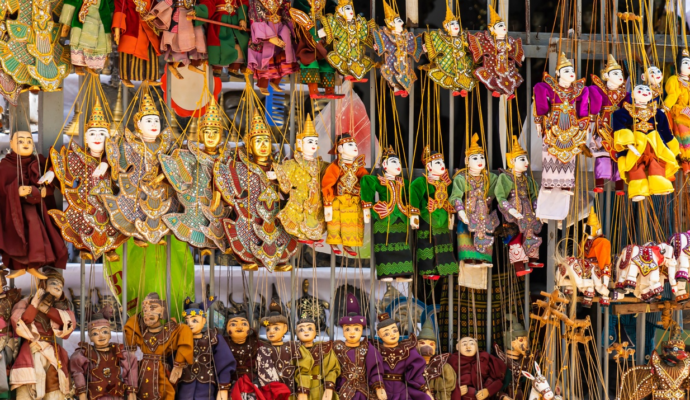Published on February 2, 2022
Home to gilded pagodas and fascinating art, Myanmar is filled with a rich culture and history for you to discover at every corner. From the exquisite U Min Thonze temple to the entertaining puppetry theater, there’s a little bit of history steeped into each art and culture activity. Below are some of Myanmar’s best art and culture activities to add to your travel itinerary.
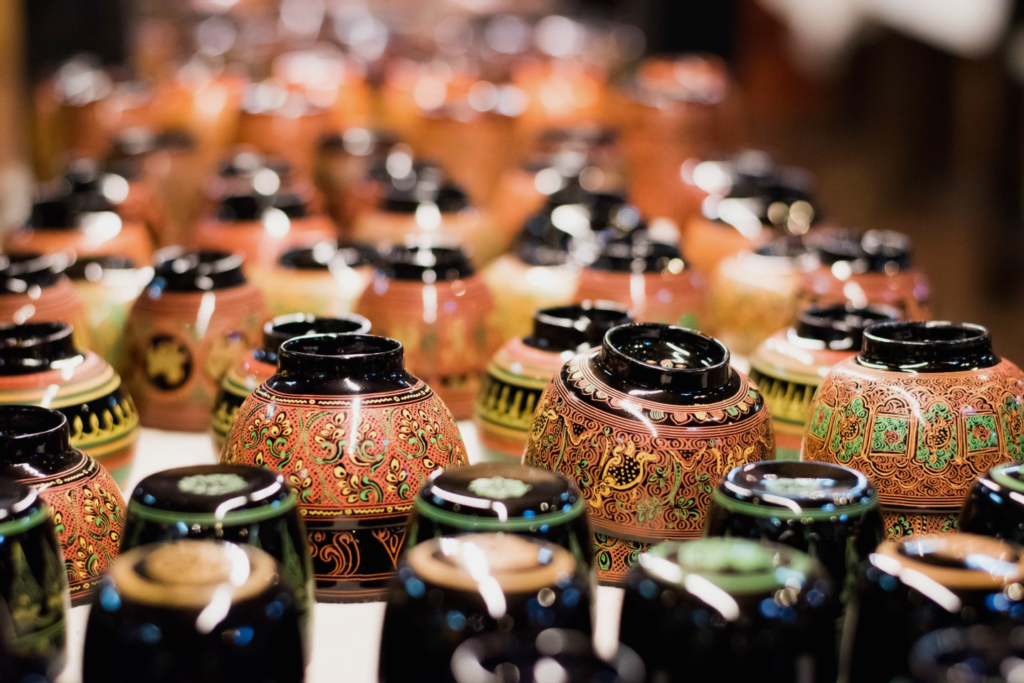
Yun De
Known as Yun De, traditional Myanmar lacquerware is one of the country’s most famous handicrafts. The origin of Myanmar lacquerware dates back to the 12th and 13th centuries in Bagan, which is the center for this handicraft. The coating and varnish are made from the sap of a Thitsi tree, making furniture and more decorative pieces beautifully shiny.
The raw material used to manufacture the lacquerware is bamboo, creating different forms of artwork from bracelets to trays and furniture. Some items depict Buddhist images and are gilded in gold. These handicrafts are staples in Myanmar homes, where many people use them as baskets, cups, and bowls. Around Bagan, you can visit lacquer shops to see the making of the lacquerware up-close. A few lacquerware shops to add to your travel itinerary include Chan Thar Lacquerware Workshop, Ever Stand Lacquerware Workshop, and Golden Bagan Lacquerware Shop.

U Min Thonze
The U Min Thonze, meaning 30 caves, is a temple complex famed for its crescent-shaped colonnade of 45 Buddha images with different expressions and postures. The temple is located about 20 kilometers to the southwest of Mandalay in the hills of Sagaing, honored as a prominent city where religion flourishes. Atop the hills of Sagaing, you can admire the amazing view of lush green valleys and magnificent stupas.
In the early period of the Bagan empire, cave temples were quite popular and were a prominent typology throughout those years. The U Min Thonze temple evokes meditation, devotion, and ritual observances in a remote location, providing a peaceful atmosphere while surrounded by tranquil scenery.
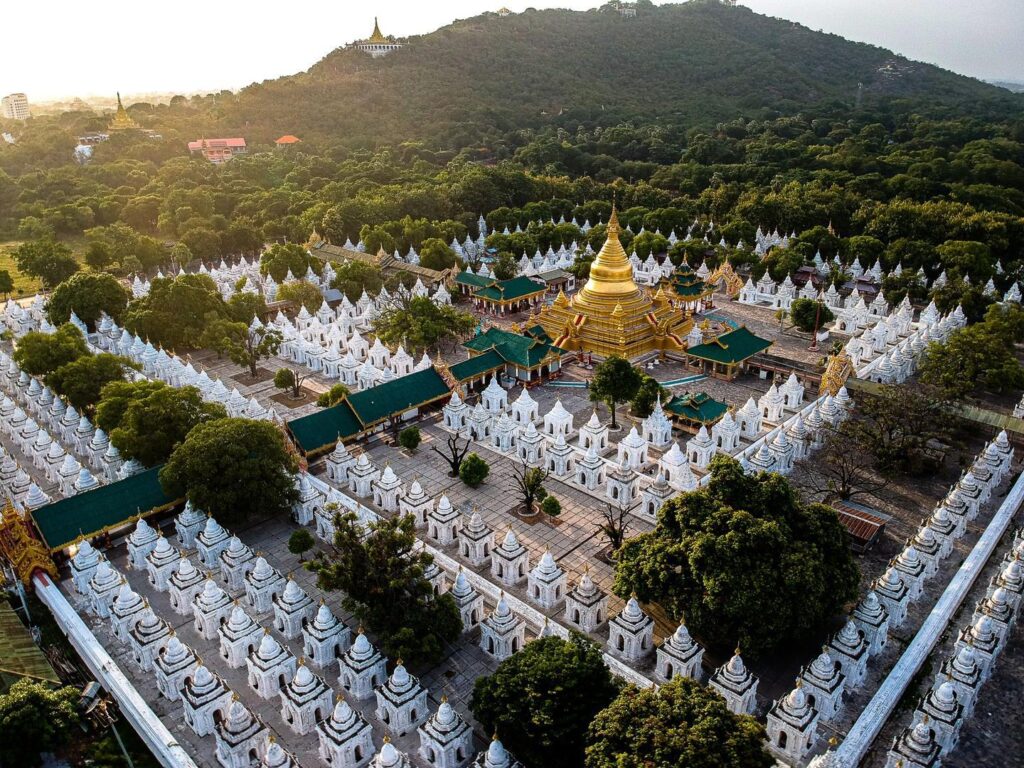
Kuthodaw Pagoda
At the bottom of Mandalay Hill in Myanmar is a stunning Buddhist stupa known as Kuthodaw Pagoda. Inside the pagoda is the world’s largest book with 729 marble slabs, which inscribe Buddhist scriptures. The pagoda was constructed shortly after the founding of Mandalay in 1857. The King’s purpose in building the pagoda was to leave future generations with a great work of merit.
Sculptures of deities and animals derived from Buddhist and Hindu mythology can be seen at the main entrance gate. It took eight years, starting in 1860, for the 729 slabs to be made. The complex center boasts a 57-meter tall gilded pagoda built in 1859. After walking through the temple grounds, visitors can climb the Mandalay hill to witness panoramic views of its many white stupas.
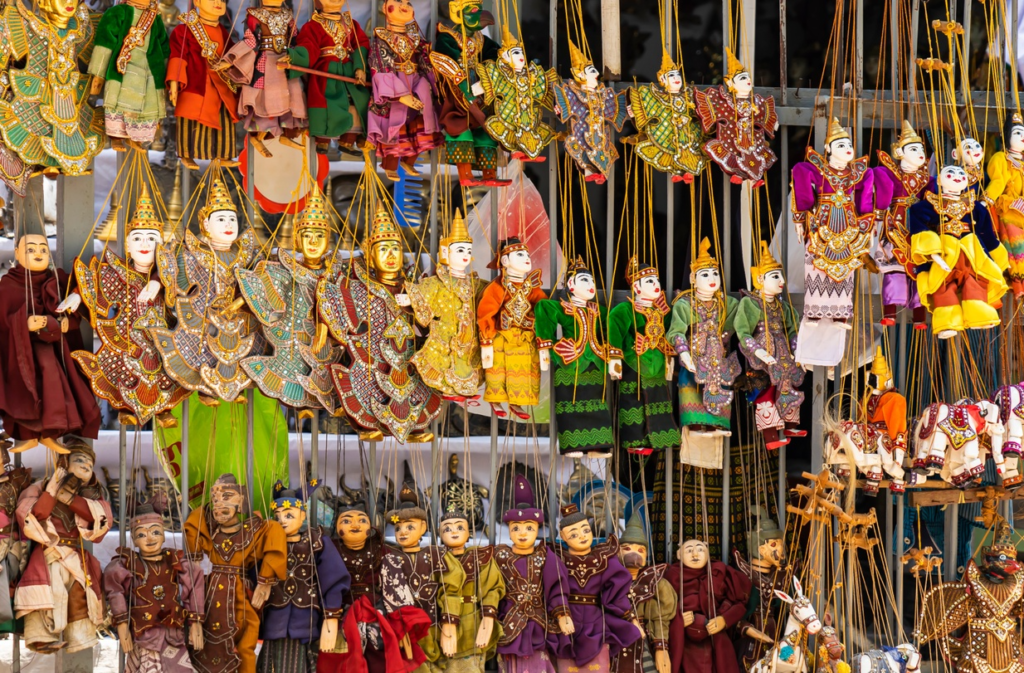
Burmese Puppetry
One of Myanmar’s most traditional art forms is wooden-carved puppets, painted in various colors and dressed in needle costumes with rings and accessories. The puppets are placed on a string, consisting of 28 puppets total. Each Burmese puppet has its own character, ranging from gods, animals, and monsters.

Traditional Burmese puppet theater dates back to the 15th century and gained popularity in the 19th century. The puppet manipulators stand on a platform with their lower bodies hidden by a painted backdrop. These entertaining performances include puppeteers, singers, and musicians. While touring through Myanmar, don’t miss your chance at an exceptional puppet performance! One of the most popular puppet theaters is the Myanmar Marionettes in Mandalay.
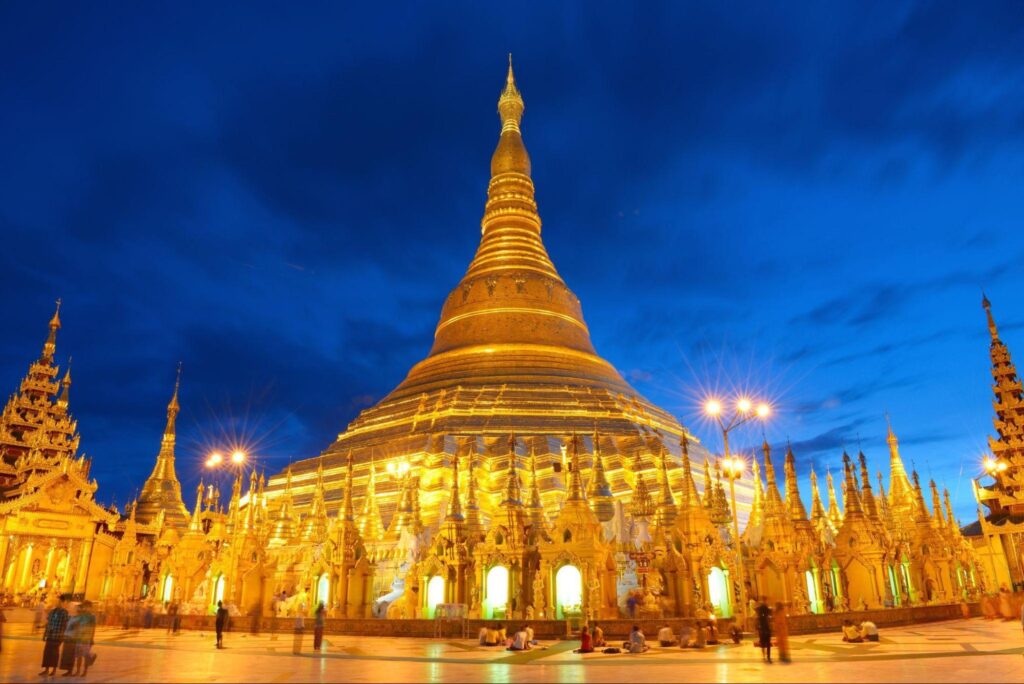
Shwedagon Pagoda
In Myanmar’s capital city of Yangon stands the Shwedagon Pagoda, a 99-meter tall gold-plated stupa. While the exact time of its construction is unknown, some believe that it dates back 2,600 years—a feat that would make it the world’s oldest pagoda. As the country’s most revered shrine, Buddhists will often make a pilgrimage to the pagoda.
Burmese mythological lions known as Chinthes guard each entrance, standing enormously with white bodies and golden heads. The main stupa is crowned with 7,000 diamonds, rubies, topaz and sapphires, and has survived earthquakes and a major fire.

Sadan Cave
While a cave transporting you from one side of a mountain to the other is interesting enough, Sadan Cave takes the experience to the next level. The entrance to the football-stadium-sized cave is populated with pagodas, dozens of Buddhist statues, and clay carvings.
These symbols of Buddhism create a place of reflection and a chance to learn more about the religion. Visitors can sit by a giant statue of a reclining Buddha to take it all in. Sadan Cave is just 17 miles away from Hpa-An and can be accessed via the road to Eindu.
Whether browsing through the lacquer shops for souvenirs or exploring a mountain cave filled with history, you’re sure to have a trip rich in art and culture when in Myanmar.



